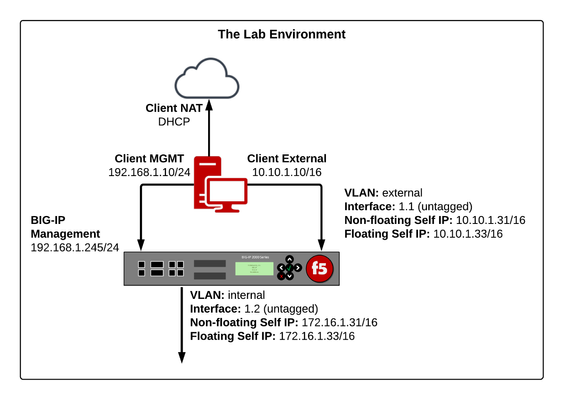how-to
1 TopicLab Guide: How To Build Your Own F5 Lab Environment
Introduction There are numerous of reasons why you should set up your own lab environment. Perhaps you are new to F5 or you might be studying for one of their exams. You might even want to evaluate one of their products. Setting up a lab environment is not always straight forward and currently there aren’t that many guides out there that starts from scratch. That is why I have put together this guide in order to assist you with building your first lab environment. This lab will be installed on your local computer using free for non-commercial use applications. The download components are hosted on https://www.f5books.eu which is an organization I’m running together with Steven Iveson. If you run into any problems using this guide or you find any errors, please comment below or contact me at philip.jonsson@f5books.eu. Together we can keep this document updated. :) The Lab Architecture So, what are we building? It’s pretty simple yet covers all our needs. These are the computing components; A Linux client running Lubuntu, allowing the use of CLI and GUI based tools and software such as ping, PuTTY (SSH), Filezilla (FTP) and a web browser. A BIG-IP VE running version 13.1.1 A Linux server running the Tomcat Apache web server, configured with five virtual hosts, listening on different IP addresses and TCP ports. We’ll be using these networks; Management - used for configuring the BIG-IP. External - the client-side network connecting the Linux client and BIG-IP; this will be a private (internal) network. Internal - the server-side network connecting the BIG-IP and Linux server; this will be another private (internal) network Client NAT – In order to gain Internet access on the client, we have assigned an interface that operates in NAT mode. Using that interface, we can download additional applications and also assist when we license our BIG-IP through the manual method. Here’s a diagram to help you visualize the end state: The full guide is located at the following download mirrors: Google Drive Dropbox Microsoft OneDrive I hope you find this guide helpful! :)7.5KViews2likes10Comments
